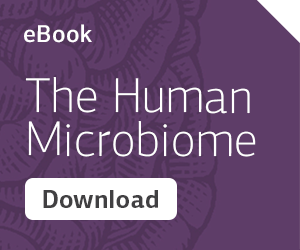[Checklist] How to Improve Your Gut’s Microbiome with Simple Adjustments

We’ve covered what a gut microbiome is, and have explored what distinguishes a healthy microbiome from one that is not healthy. But now the question remains: how do I improve my gut microbiome? Is it easy or difficult, a quick or a slow process?
A healthy gut microbiome is important to overall health. Like many endeavors in life, improving your microbiome’s health can be a slow, methodical process. The great news is, it doesn’t need to be difficult. Jump to the checklist, or read how different foods can support a healthy microbiome.
How food can support a healthy gut microbiome
Food consumed in our diet plays a huge role in the health of our gut microbiome for many reasons. Gut microbiota need to “eat” just like we do. They could be fed with both healthy foods or unhealthy foods, but when our diets are high in healthy foods, our gut microbiome can thrive. Just like a diet with lots of variety provides us all the different vitamins and minerals we need to fuel our bodies, a diverse diet feeds all the different types of “good” bacteria we need to support a healthy gut microbiome.
Here are three examples of types of healthy, diverse foods that can feed and develop a healthy microbiome.
1. Fermentable dietary fiber
Dietary fibers, found in foods such as nuts, seeds, legumes, vegetables, and whole grains, are edible carbohydrates defined by their ability to resist digestive enzymes in the GI tract. In the simplest terms, dietary fiber can be characterized as either soluble or insoluble:
- Soluble fiber dissolves in water and is associated with metabolic health benefits (good sources include oat bran, barley, nuts and seeds, beans and lentils, and some fruits and vegetables)1
- Insoluble fiber does not dissolve in water and is associated as a “bulking agent” (good sources include whole grains, celery, fruit with edible seeds, and root vegetables)2
Fermentable dietary fibers usually fall into the “soluble” category and can pass through the GI tract unscathed to the large intestine. There, they provide energy for the gut microbiome through fermentation.3
Fermentation is a process of breaking down carbohydrates without oxygen that we often associate with the creation of things like beer, yogurt, and sourdough bread. Additionally, fermentation is also the process our bodies use when gut bacteria break downfoods, like soluble fibers, for energy. We have bacteria to thank for every pint at happy hour, spoonful of yogurt, and loaf of sourdough – as well as for a thriving gut microbiome
The fermentation of some of these fibers is associated with an increased production of short-chain fatty acids (SCFAs). SCFAs serve as immune regulators and as fuel for intestinal cells, which need energy to perform important jobs in the body:
- support the integrity of the intestinal barrier
- support the immune system
- promote electrolyte and water absorption
- and much more.4
A sturdy intestinal barrier, supported by fermentable dietary fibers, is important for nutrient absorption into our blood stream and keeping pathogens out of circulation in our bodies.
2. Fermented foods

Fermented foods, such as sauerkraut, kimchi, kefir, and yogurt, are those that have been created through the process of fermentation, where bacteria transform carbohydrates into alcohol or acids. While fermented foods were historically touted for their preservation abilities, we’ve also learned over time that these foods deliver “good” bacteria to support a healthy gut microbiome.5
3. Polyphenols
Polyphenols are phytochemicals (unique components of plant-based foods that are associated with a spectrum of health benefits). There are many examples of polyphenols in our diets. They are found in vegetables, fruits, cereal grains, tea, coffee, dark chocolate, cocoa powder and wine. Several studies link polyphenol consumption with the growth of “good” gut bacteria and the optimization of the composition of our gut microbiome.6 Additionally, polyphenols are associated with improved metabolic factors and protection from intestinal inflammation associated with dysbiosis in our gut microbiome.7
How supplements can support a healthy gut microbiome
If the foods in your diet aren’t cutting it, you can add supplements to support your healthy gut microbiome. Probiotics and prebiotics, and sometimes a combination of both, can be great solutions for supporting a healthy gut microbiome. Here’s what to look for.
Probiotic & prebiotic supplements can support a healthy gut microbiome
Probiotics are live microorganisms that positively impact our gut microbiome and, as a result, our general well-being. They can be found in fermented foods, like yogurt, sauerkraut, kimchi, and kefir, or nutritional supplements. Probiotics support a healthy gut microbiome first and foremost by simply increasing the number of bacteria that are present. Increasing bacterial populations in the intestines may help to balance the composition of the gut microbiome.
Probiotic supplementation is also associated with supporting the integrity of the intestinal barrier and regulating cytokine production. Cytokines are chemical messengers of the immune system that play a role in the immune response.8 Probiotics support this process by increasing the production of cytokines associated with lowering inflammation and decreasing production of those that promote inflammation.
Like probiotics, prebiotics can be consumed either as food in the diet or as nutritional supplements. Unlike probiotics, prebiotics are not live organisms; instead, they provide nourishment for live organisms.
Prebiotics are unique sources of energy for gut microbiota because they are able to avoid being digested in the GI tract so they can arrive undigested in time for dinner for gut microbiota. Types of prebiotics include:
- 2’-fucosyllactose (2’-FL), a notable prebiotic, is a human milk oligosaccharide (HMO) found in breastmilk along with all the other essential nutrients vital for a growing newborn baby. 2’-FL is associated with a host of positive benefits, including support for populations of “good” microbes; this has been shown in infant models and also in adults supplemented with bio-equivelent 2’-FL.^ 9,10,11 Since we do not drink human milk past infancy, one way to get this prebiotic as an adult is through prebiotic supplements made with a chemically identical form of 2’-FL.
- Inulin is a type of fiber naturally found in many plant foods (leeks, asparagus, chicory root, and many more) and is positively associated with metabolic conditions.12
- Fructooligosaccharides (FOS) are a form of carbohydrate naturally found in many plant foods (onion, garlic, banana, and many more) and are associated with improved mineral absorption and lipid levels.13
- Galactooligosaccharides (GOS) are a group of carbohydrates made up of some combination of lactose, found in milk, and glucose.14
- Lactulose is a synthetic sugar first used clinically in the 1960s and since been used to improve intestinal motility and chronic constipation.15
^To date, shown in multiple animal studies, infants, and one adult human study.
The Checklist: How to improve your microbiome
Through food and supplementation, we can improve the variety of bacterial species in the microbiome, which can have far-reaching health benefits. Consuming a diet of whole, unprocessed food while providing pro- and prebiotic support can help build, repair and/or maintain the gut microbiome.
□ Include whole grains, celery, fruit with edible seeds, and root vegetables, along with other insoluble fiber sources17
□ Include sauerkraut, kimchi, kefir, and/or yogurt in your diet, along with other fermented foods
□ Include plenty of vegetables in your diet –they’re often fiber sources, and polyphenols are found in them
□ Include fruits, cereal grains, tea, coffee, dark chocolate, cocoa powder and/or wine, to consume polyphenols
□ Supplement with probiotic or prebiotic supplements when needed, such as with a prebiotic supplement containing 2’-FL
□ Exercise regularly with physical activity
Avoid smoking or drinking excess amounts of alcohol
□ Avoid over-using antibiotics – only use antibiotics according to a healthcare practitioner’s prescription to treat bacterial infections
□ Include beans, lentils, nuts, and seeds in your diet, along with other soluble fiber sources16
References:
[1] https://www.cell.com/cell-host-microbe/fulltext/S1931-3128(18)30266-X
[2] https://www.cell.com/cell-host-microbe/fulltext/S1931-3128(18)30266-X
[3] https://www.cell.com/cell-host-microbe/fulltext/S1931-3128(18)30266-X
[4] https://www.ncbi.nlm.nih.gov/pmc/articles/PMC4717894/
[5] https://academic.oup.com/nutritionreviews/article/76/Supplement_1/4/5185609
[6] https://www.ncbi.nlm.nih.gov/pmc/articles/PMC4512228/
[7] https://www.ncbi.nlm.nih.gov/pubmed/25080446
[8] https://www.ncbi.nlm.nih.gov/pmc/articles/PMC5964481/
[9] https://microbiomejournal.biomedcentral.com/articles/10.1186/s40168-015-0071-z
[10] https://www.sciencedirect.com/science/article/pii/S1756464619304086
[11] https://www.ncbi.nlm.nih.gov/pmc/articles/PMC5082288/
[12] https://www.ncbi.nlm.nih.gov/pmc/articles/PMC6041804/
[13] https://www.ncbi.nlm.nih.gov/pubmed/20119826
[14] https://www.ncbi.nlm.nih.gov/pmc/articles/PMC2607002/
[15] https://www.ncbi.nlm.nih.gov/books/NBK536930/
[16] https://www.cell.com/cell-host-microbe/fulltext/S1931-3128(18)30266-X
[17] https://www.cell.com/cell-host-microbe/fulltext/S1931-3128(18)30266-X
^To date, shown in multiple animal studies, infants, and one adult human study.
